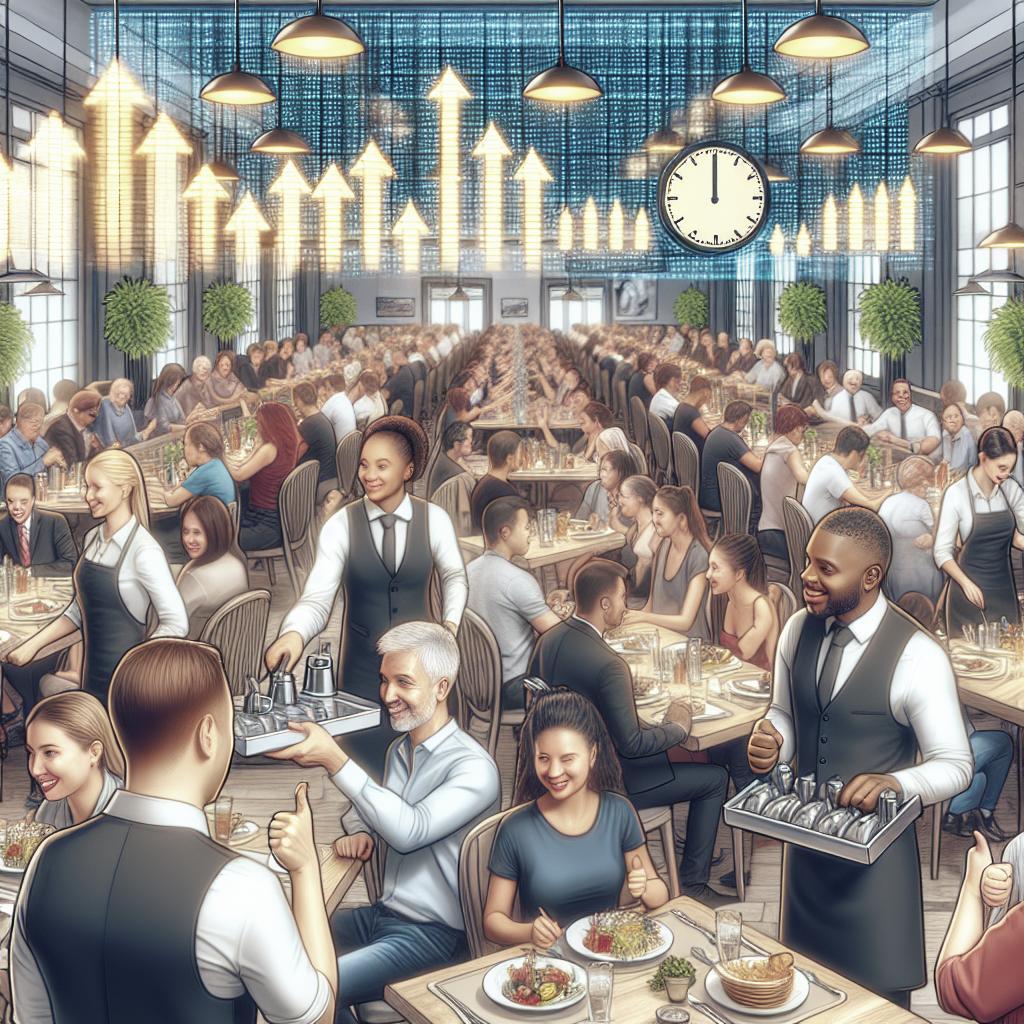As restaurant owners and managers strive to maximize revenue while maintaining high levels of customer satisfaction, improving table turnover rate becomes an essential strategy. Faster table turnover means seating more guests, increasing potential sales, and enhancing overall customer experience without compromising service quality. This blog post will dive into what table turnover rate is, why it’s important, and five practical tactics to improve it. From using online reservation systems to optimizing your dining room layout, training your staff to be efficient, having a simplified menu, and encouraging contactless payments, we will explore various approaches to help your restaurant thrive.
What is table turnover rate?
Table turnover rate refers to the number of times a table is occupied by different customers during a given period, typically a meal service. It is calculated by dividing the number of parties served by the number of tables in the dining area. A higher table turnover rate indicates that tables are being used more efficiently, which can lead to increased revenue and customer satisfaction. Understanding and managing your restaurant’s table turnover rate is crucial because it directly impacts your ability to serve more guests, enhance service efficiency, and maximize profits. It’s not just about rushing customers, but rather streamlining operations to create a pleasant dining experience while maintaining a consistent flow of patrons.
5 tactics to improve table turnover rate
1. Use an online reservation system
An online reservation system allows customers to book tables in advance, reducing waiting times and helping to predict busy periods more accurately. By understanding peak times, you can staff your restaurant appropriately and ensure that the kitchen and service staff are prepared for surges in demand. Additionally, online reservation systems often include features that allow for automated reminders and confirmations, reducing no-show rates. This results in more consistent table occupancy and smoother transitions between guests. Furthermore, having data on past reservations can help in identifying patterns and optimizing the booking flow, ultimately improving table turnover.
2. Optimise your dining room layout
A well-designed dining room layout can significantly enhance the table turnover rate. Consider the flow of traffic within the restaurant, ensuring that waitstaff can move seamlessly between tables, the kitchen, and the front of the house. Strategically place tables to maximize space without crowding, making sure that there is enough room for guests and staff to maneuver comfortably. Balancing table sizes is also important. Having a mix of two-tops, four-tops, and larger tables can cater to different party sizes, ensuring that tables are less likely to sit empty waiting for the right-sized group. Flexible seating arrangements, like movable partitions and modular furniture, can help adapt the dining space quickly to meet demand.
3. Train your staff to be efficient
Your staff plays a pivotal role in improving table turnover rate. Efficiently trained waitstaff can manage multiple tables, anticipate customer needs, and turn tables over promptly without rushing guests. Start with comprehensive training that focuses on multitasking, time management, and effective communication. Encourage a team-oriented approach where staff members assist each other during busy periods. Implement practices such as pre-bussing (clearing empty plates before a table is vacant) and using designated runners for food and drinks. This minimizes wait times for guests and enhances the overall dining experience, leading to more timely table turnover.
4. Have a simple and short menu
A lengthy menu with numerous options can slow down the ordering process and lead to backlogs in the kitchen. By streamlining your menu to feature a curated selection of well-executed dishes, you can speed up decision-making for customers and enhance kitchen efficiency. With fewer items to prepare, the kitchen can maintain high quality while reducing wait times for meals. Additionally, a simpler menu is easier to update seasonally, keeping it fresh and exciting for returning guests. Offering daily specials can also add variety without overwhelming the kitchen or diners.
5. Encourage contactless payments
Encouraging contactless payments can significantly expedite the payment process, reducing the time customers spend at the table after finishing their meal. Modern contactless payment methods, such as mobile wallets, QR codes, and NFC-enabled cards, allow guests to settle their bills quickly and conveniently. Implementing portable point-of-sale (POS) systems can enable waitstaff to process payments directly at the table, further speeding up the turnover. Encouraging pre-payment for certain services, such as drinks at the bar, can also reduce congestion at the main dining area, facilitating a smoother flow of customers.
Increase table turns and seat guests faster
In conclusion, enhancing your table turnover rate is a multifaceted process involving a combination of technology, strategic layout planning, staff training, menu optimization, and efficient payment methods. Implementing these tactics can lead to more efficient operations, happier customers, and increased profits. Make continuous assessments and adjustments to stay responsive to customer needs and market trends. By fostering a culture of efficiency and customer satisfaction, your restaurant can thrive even in competitive environments. “`html
| Tactic | Benefits |
|---|---|
| Use an online reservation system | Reduces waiting times, predicts busy periods, decreases no-show rates. |
| Optimise your dining room layout | Improves traffic flow, maximizes space, caters to different party sizes. |
| Train your staff to be efficient | Enhances multitasking, anticipates customer needs, promotes team work. |
| Have a simple and short menu | Speeds up ordering process, enhances kitchen efficiency, easy seasonal updates. |
| Encourage contactless payments | Speeds up payment process, reduces table time post-meal, allows quick table turnover. |
“`
